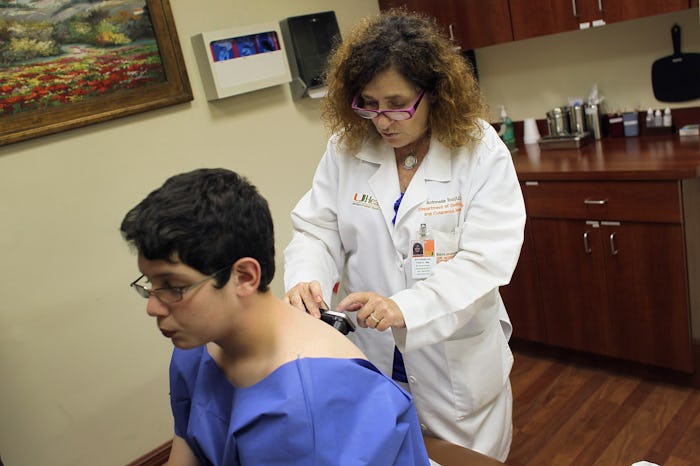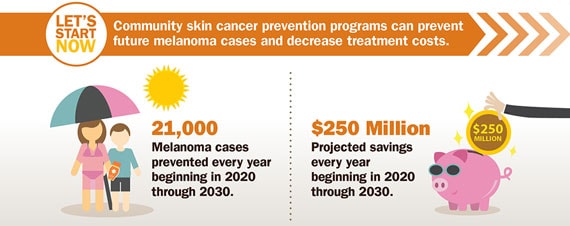Life

It's Rare, But Kids *Can* Get Skin Cancer — Here's What You Need To Know
Every six months, I go to my dermatologist's office, strip down, and put on what I affectionately refer to as my "paper negligee." She comes in, all smiles and kindness before she examines every square inch of my body. It sounds like a lot, but it's totally necessary for my health. I've even taken both of my children to the dermatologist to look at various moles and marks that worried me. But can kids get skin cancer, or is it just a disease of grown-ups and I'm too much of a hypochondriac to notice?
Unfortunately, while it is exceedingly rare, noted the American Academy of Pediatrics (AAP), children can get skin cancers like melanoma and basal cell carcinoma. As of right now, fewer than one percent of all diagnosed cases of melanoma are pediatric, but the number has been on the rise. The reasons for this are varied. Many parents assume children don't or can't get skin cancer, so they're not looking for any of the symptoms. The use of sunscreen, according to the AAP, is also spotty at best, negligent at worst. And we can't forget what we've done to the environment. According to the Skin Cancer Foundation, the ozone layer, that stratospheric halo that blocks us from the damaging UVB rays, has been dwindling steadily since the 1970s.
Two years ago, I got a very unexpected call from my friend Jess. It just read, "Belle has skin cancer." I remember staring at my screen for a solid few minutes. At the time, Belle was 6 years old. She is a beautiful beach baby who could double as a mermaid for how amazing she is in the water. It didn't seem possible to me that such a young, vibrant little girl had skin cancer. Yet, sure enough, she was diagnosed with melanoma.
Jess is really fair, and she's just as on-top of her skin checks as I am. One day when she was bathing her daughter, she noticed a mole on the back of her leg that seemed to have popped up overnight. It was asymmetrical, puffy, and a deep red color. It didn't look like any of the other moles on Belle's freckled skin. She admits she had a bit of a panic attack when she first saw it, assuming the worst.
The dermatologist excised it immediately, and told Jess it didn't look good and that she was right to be worried. It turns out it was a developing melanoma that didn't require further treatment after an additional surgery to make sure it was eradicated. But that terrible incident serves as a reminder for all of us.

The Society for Pediatric Dermatology wrote, "While skin cancer is the most common type of cancer in adults, it is rare in children. Some children are more likely to get skin cancer because of factors in their health or family history." That means for people like me and Jess who have a history of carcinomas or dodgy looking moles, our kids are at a higher risk of developing the same problems. This is especially true if your child is fair, freckled, or has numerous moles, according to the Society.
Talk to your pediatrician about risk factors, but in the meantime, the Centers for Disease Control and Prevention (CDC) want you to remember the ABCDEs of mole-checking for melanoma for your child and for you.
- “A” stands for asymmetrical. Is the mole or spot wonky shaped? Is the top wider or one side larger?
- “B” stands for border. Is the border neat and tidy, or does it spread out with no consistent line?
- “C” is for color. Is it uneven? Is there a dark spot?
- “D” is for diameter. Is it bigger than the size of a pencil eraser tip?
- “E” is for evolving. Is it changing positions?
If you notice any of these, get it checked right away. Otherwise, make sure to use sunscreen properly and keep your kids indoors when the sun is high.
Check out Romper's new video series, Bearing The Motherload, where disagreeing parents from different sides of an issue sit down with a mediator and talk about how to support (and not judge) each other’s parenting perspectives. New episodes air Mondays on Facebook.